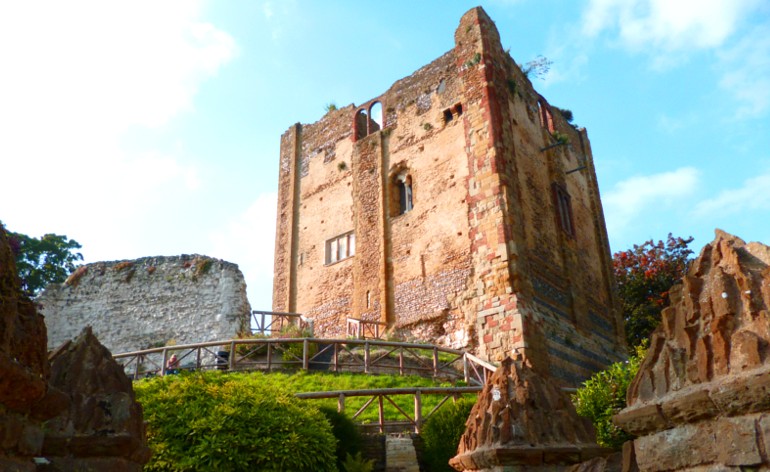Here’s a brief history of Guildford from its origins as a Saxon settlement to the thriving, commuter town that now exists. Find out how the town has developed over the past thousand years and been shaped and re-shaped. 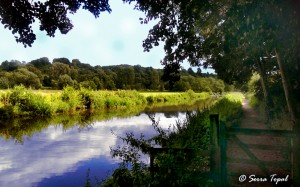
Guildford began as a Saxon village shortly after Roman authority had been removed from Britain. Built on a ford where the Harrow Way crossed the River Wey, the root of its name may well derive from ‘Gold’ rather than ‘Guild’ due to the golden flowers that grew at the riverside or because of the golden sands on the banks of the river (not because of the amount of gold in the region’s sedimentary rocks).
There is also an old coaching inn that lies on the outskirts of Guildford town centre on the Epsom Road nowadays that was previously known as the ‘Sanford Arms’. The names of ‘Sand’ and ‘Ford’ add extra weight to the suggestion that Guildford’s name refers to the distinctive golden sands on the banks of the River Wey where the water cuts through the sandy outcrop just south of the town.
Guildford turned from village into a town in the early 10th century when the English kings were building a network of fortified settlements across the country. These were created as bulwarks against the Danish invaders and it is highly likely that Guildford was made such a fortified settlement.
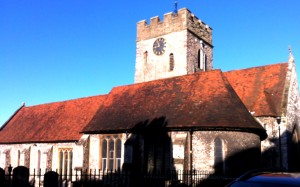 Saxon Guildford was a thriving community and was the location of the Royal Mint despite having a population of only several hundred until the reign of William the Conqueror. And around about this time in the middle of the 10th century, St Mary’s Church (which still stands proud on Quarry Street in Guildford) was built/rebuilt in stone, an unusual development as most parish churches of the time were made of wood.
Saxon Guildford was a thriving community and was the location of the Royal Mint despite having a population of only several hundred until the reign of William the Conqueror. And around about this time in the middle of the 10th century, St Mary’s Church (which still stands proud on Quarry Street in Guildford) was built/rebuilt in stone, an unusual development as most parish churches of the time were made of wood.
Guildford had a population of around 900 at the time it appeared in the Domesday Book (1086) as Geldeford and Gildeford. That may seem a small number by today’s standards, but then settlements were very small, with a typical village having only 100-150 inhabitants.
The Normans built a wooden castle to overlook Guildford and the King officially held 75 enclosed houses where there were 175 heads of houses or homagers and the town rendered £32. Guildford Castle was then rebuilt in stone in the 12th century. As the threat of invasion and insurrection diminished, the status of the castle was demoted to simply that of a royal hunting lodge as Guildford was, at that time, at the edge of Windsor Great Park.
It is also thought, due to a discovery in 1995, that there may have been a synagogue operating in Guildford in the 12th century. The chamber was discovered on the High Street and is widely contended, but if proven, will be Western Europe’s oldest remaining synagogue. Early in the 12th century, a ‘hospital’ was also built for the poor and sick in Guildford.
In 1257, Guildford was given its first charter (a document giving the townspeople certain rights and a means to form their own government) and the right to hold a market and a fair. In the Middle Ages, a fair was similar to a market, but differed as it was only held once a year (for a few days) and would attract buyers and sellers from all over Surrey and North Hampshire. In Medieval Guildford the main industry was wool making, but there were the usual craftsmen found in any medieval town such as carpenters, blacksmiths, butchers and bakers.
From 1295, Guildford elected two members to the Unreformed House of Commons (MP’s) but failed to develop as a town as its proximity to London affected its trade. 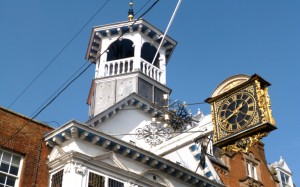 From the 13th century onwards there was Dominican, or Black Friars as they were known due to the colour of their outfits present in Guildford. These friars were like monks but went out preaching instead of withdrawing from the world and are the source of inspiration for the name of the modern shopping centre, The Friary.
From the 13th century onwards there was Dominican, or Black Friars as they were known due to the colour of their outfits present in Guildford. These friars were like monks but went out preaching instead of withdrawing from the world and are the source of inspiration for the name of the modern shopping centre, The Friary.
The population may have grown to about 1,300 in the 14th century, but it remained a small town and at approximately this time the Guildhall was constructed. It is a recognisable landmark of Guildford even today. The north end was extended in 1589 and the Council Chamber was added in 1683 when a projecting clock was also made for the front of the building, protruding and overlooking the High Street.
In 1598 there was a court case referring to a sport called kreckett being played at the Grammar School in Guildford which was built in 1509. The Oxford English Dictionary even quotes this reference as the first ever recorded instance of the game of cricket in the English language and the school later became Royal, gaining the patronage of Edward VI in 1552.
However, in the 16th century Guildford slumped in importance as Henry VIII closed the friary and the hospital in 1539. Guildford continued to be an important market town for the surrounding villages, but on the other hand, the Castle had fallen into ruins and was sold to a private owner in 1611. In 1619, George Abbot (the Archbishop 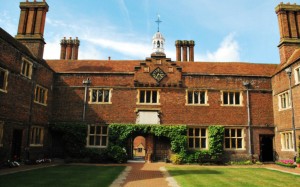 of Canterbury) established some almshouses to tend to the elderly people of the town, named at the time the Hospital of the Holy Trinity, but by which we now know it as Abbot’s Hospital.
of Canterbury) established some almshouses to tend to the elderly people of the town, named at the time the Hospital of the Holy Trinity, but by which we now know it as Abbot’s Hospital.
Guildford suffered from plague outbreaks in 1645-46 at the end of the civil war when the population decreased significantly. However, later on in the century, Guildford would be changed forever with the completion of the Wey Navigation in 1653. It pre-dated any other major canal building program in Britain by more than a century and made it possible for local businesses to access the Thames at Weybridge. The town would prosper for hundreds of years to come after this breakthrough and in 1683 a new Guildhall was built in Guildford.
As the town began to expand, a theatre was built in 1789, an iron foundry was built in 1794 and a barracks was built in the town the same year but closed down in 1818 after the end of the Napoleonic wars.
In 1801, at the time of the first census, Guildford had a population of just over 2,500 which meant that it was still a small town by contemporary standards. This was to change over the course of the 19th century as most of the country did with the industrial revolution. A corn exchange (where grain could be bought and sold) was built in 1818 and in 1821 it gained a gas supply which was used to light the streets. A branch of the London and South-Western railway was also opened in May 1845 connecting Guildford to Woking which still exists today. This allowed middle class men to live in Guildford and commute to work in London and so by the 1870s Guildford had become a commuter town.
Guildford was evolving quickly. A Borough Council was formed in 1836 and paved the streets in the 1860s and bought the castle grounds in 1885 to use as a park; opening to the public in 1888. Guildford gained its first local newspaper in 1855 and 11 years later in 1866 they had the first modern hospital built. The Stoke Recreation Ground opened in 1889, the first electricity supply in Guildford followed in 1891 and the Guildford Museum opened in 1898, whilst the 1890s also saw the construction 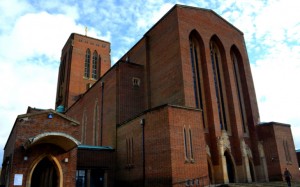 of drains and sewers. In 1895 the Dennis brothers set up a firm making bicycles which later went on to make cars, dustcarts, buses and most famously fire engines.
of drains and sewers. In 1895 the Dennis brothers set up a firm making bicycles which later went on to make cars, dustcarts, buses and most famously fire engines.
At the turn of the century Guildford’s population was nearly 16,000 but this rose rapidly over the century, partly due to the boundary extensions which happened in 1904, 1933 and 1974. Guildford continued along its route of development with Westborough council estate being built in the 1920s and Guildford was made a diocese in 1925 which paved the way for work to begin on building Guildford Cathedral in 1936. A bypass was built in the early 1930s and Guildford Lido was opened in 1933.
The first public library in Guildford opened in 1942 and 20 years later in 1962 the Civic Hall was built. Three years later, the prestigious Yvonne Arnaud Theatre was opened and in 1968 and The University of Surrey took its first students. Their first sports centre was built in 1971 and was replaced with the Surrey Sports Park in 2010 which lies next to the Royal Surrey County Hospital which opened in 1980, the same year as the Friary shopping centre which has also had a recent facelift to keep up with consumer trends.
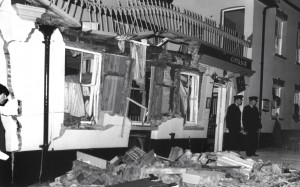 Unfortunately, one of Guildford’s darkest days came on October 5 1974 when the IRA planted bombs in two pubs in Guildford as part of a terrorist plot. Despite both bombs detonating, there were only 5 subsequent deaths, but at least another 50 casualties. The four suspected terrorists that were arrested became known as the ‘Guildford Four’ and were convicted in 1975 to long sentences. However, the story does not just end there as they were released in 1989 after it became evident that police corruption and malpractice had led to their wrongful incarceration.
Unfortunately, one of Guildford’s darkest days came on October 5 1974 when the IRA planted bombs in two pubs in Guildford as part of a terrorist plot. Despite both bombs detonating, there were only 5 subsequent deaths, but at least another 50 casualties. The four suspected terrorists that were arrested became known as the ‘Guildford Four’ and were convicted in 1975 to long sentences. However, the story does not just end there as they were released in 1989 after it became evident that police corruption and malpractice had led to their wrongful incarceration.
In more recent times, Guildford has seen a number of facilities rejuvenated and developed to enable it to compete with the draws of London. Surrey Sports Park, as mentioned, is now one of Europe’s premier sports facilities and alongside the Guildford Spectrum (built in 1993), all your fitness and sporting fancies are covered. There was a brand new Odeon built in 1996 with several large screens and The Electric Theatre has provided Guildford with a broader and less traditional selection of shows since its opening in 1997. And even more recently than this, the old Civic Hall was demolished and replaced with G Live, Guildford’s very own arts and entertainment hub which opened in 2011.
James Martin
A special thanks to Ezra Rollinson, Serra Topal and Ade Lawal for providing images.


